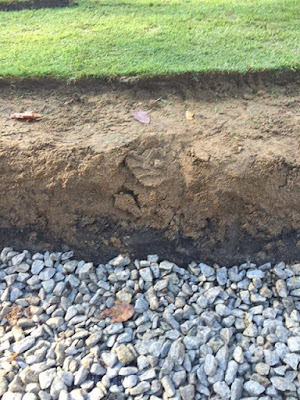In 1999 and 2003, Highlands CC sand capped the 10th and 12th fairways, respectably. This is what the soil profile looks like. There is a nice subgrade with internal drainage and 10-12" of sand on top. While the fairways do drain slightly faster than those growing on native soil, there are areas on #12 specifically where the river sand doesn't drain as well. River sand is just that, sand and silt dredged off of the bottom of a river. Given what it is, it is hard to determine how consistent it will be from load to load. Too much silt in the mix, the water draining characteristics are lost. This is the case of any sand including bunker sand. Sand is all about particle size and shape. If there is a mix of different shapes and sizes, the sand will set up like concrete. In fact, that is exactly what concrete is; a mixture of particle sizes that when wet, compact and solidify. Sand that is consistent in size and angular in shape is very stable. This would make the ideal bunker sand. Finally, sand that is consistent in shape but round, is very unstable, make horrible bunker sand and blows easily in the wind. This is the culprit of the "fried egg lie" in a bunker.
In the case of drainage projects, river sand is always a quick choice because it is cheap. Good sand is quite expensive. The cost of the project could be 30-50% more if good sand is used and that becomes a deterrent. To rebuild a green today, the cost is an estimated $65,000 for a 5,000-6,000 square foot green with the sand being 1/2 to 1/3 of that cost, meaning over $20,000 per green depending on the type of sand. River sand can be delivered for a few hundred dollars a load, making it very economical but unpredictable. There are some river sands that are sifted and certified to meet a spec but the cost does increase because of that. Some golf courses even build greens from it.

